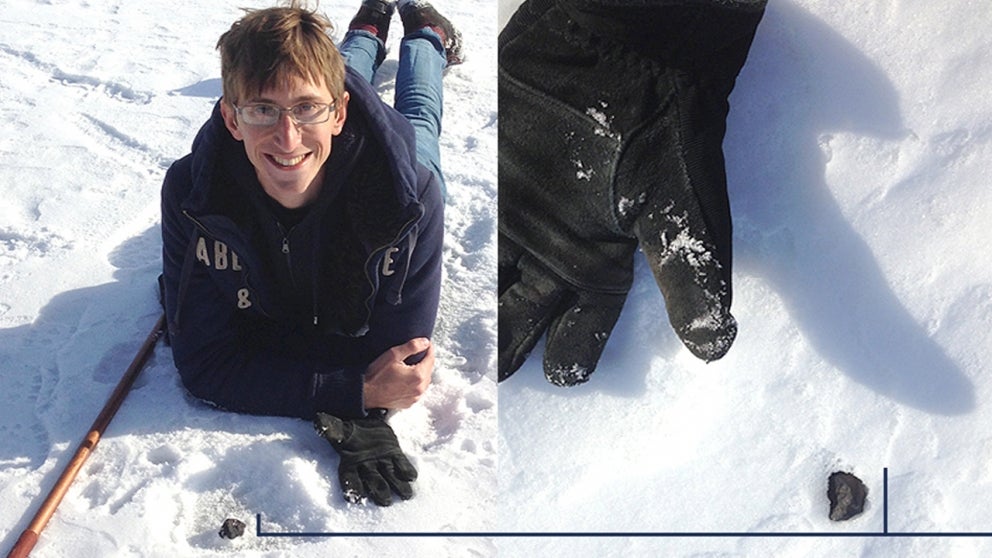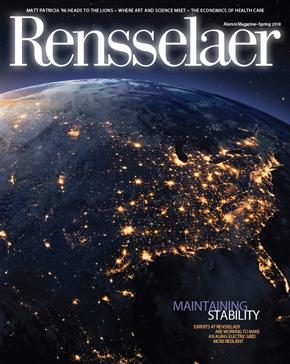
STUDENT LIFE
Out of This World Discovery

“I’ve had a hobby for rock collecting and meteorites for as long as I can remember.”
— Brandon Weller
Brandon Weller’s dream has been to find and hold a meteorite fragment. Weller, who is in his third year of the accelerated physician-scientist joint program with Rensselaer and Albany Medical Center, has been a lifelong rock collector and meteor enthusiast.
“I’ve been waiting for a big meteor fall for years,” he told Michigan Live. “I’ve had a hobby for rock collecting and meteorites for as long as I can remember.”
After hearing about a meteor that passed over Michigan on Jan. 16, the future medical-school student hopped in his car and drove 10 hours to the Hamburg Township in southeast Michigan.
Weller is not alone in his love of meteors. Avid seekers follow the American Meteor Society, a nonprofit scientific organization established to encourage and support the research activities of both amateur and professional astronomers who are interested in the field of meteor astronomy. Its affiliates observe, monitor, collect data on, study, and report on meteors, meteor showers, meteoric fireballs, and related meteoric phenomena.
Weller searched for a day and a half with no success. He was told there were other professional meteor hunters searching Strawberry Lake, so he turned his search to that location.
According to Michigan Live, “20 minutes later, Weller saw a black fragment sticking out of the ground and his dream finally came true. ‘It was the best feeling for me,’ he said. ‘I had been waiting to find a meteorite. I had dreams about it. It had been a goal for so long. To search the snow and see that thing sticking out was unreal.’”
The rock, which weighs approximately 60 grams, could be worth several thousand dollars. Weller, however, is not interested in selling. “I’m keeping this one until the day I die,” he says.
Once back on campus, Weller brought the meteorite to Bruce Watson, Institute Professor, and Morgan Schaller, assistant professor of earth and environmental sciences, who measured the composition of a piece of the rock using an electron probe microanalyzer. They determined that the meteorite belongs to a class of meteorites that are about 4.6 billion years old and contain some of the same elements found in the Earth’s molten core.















